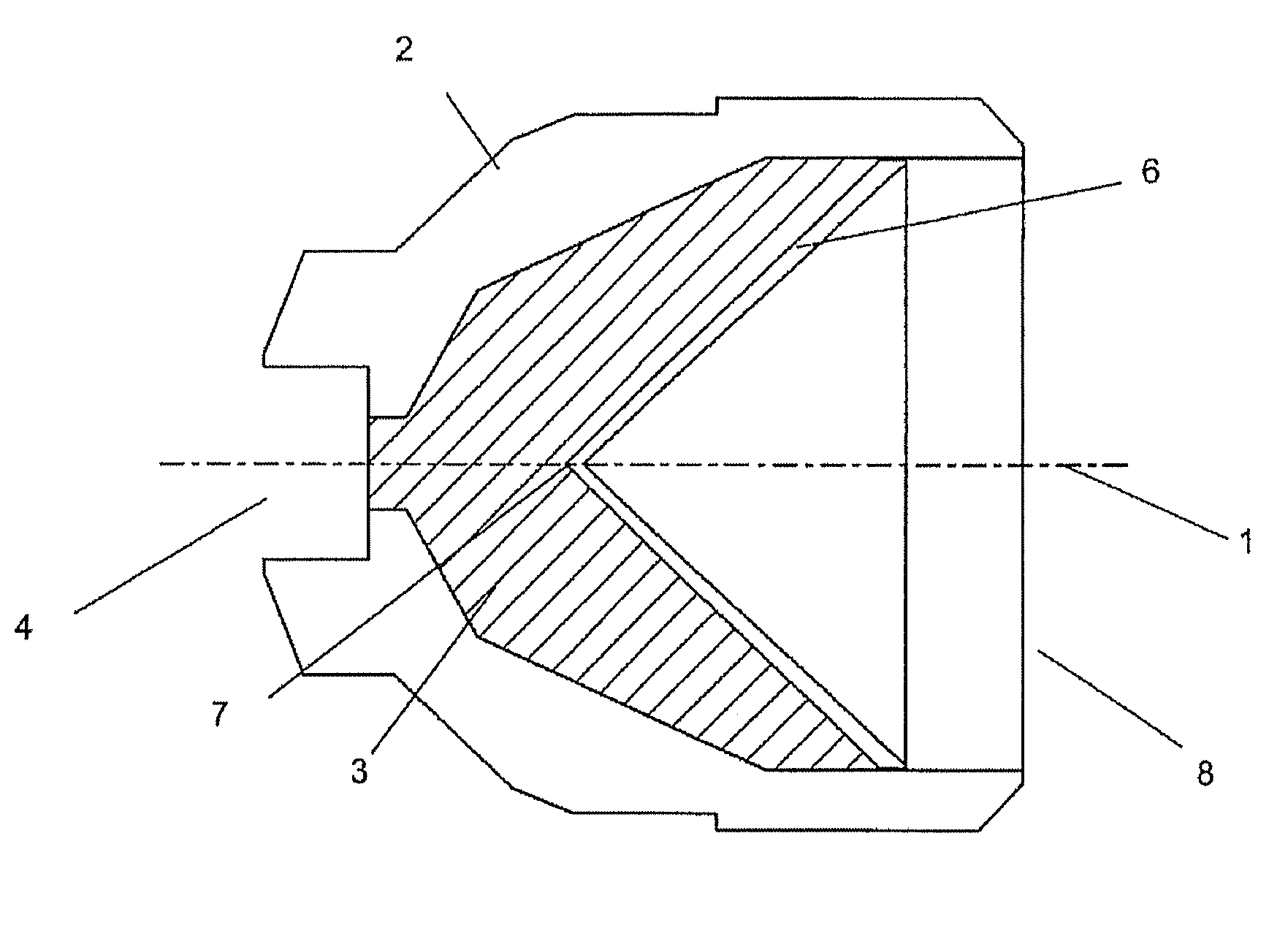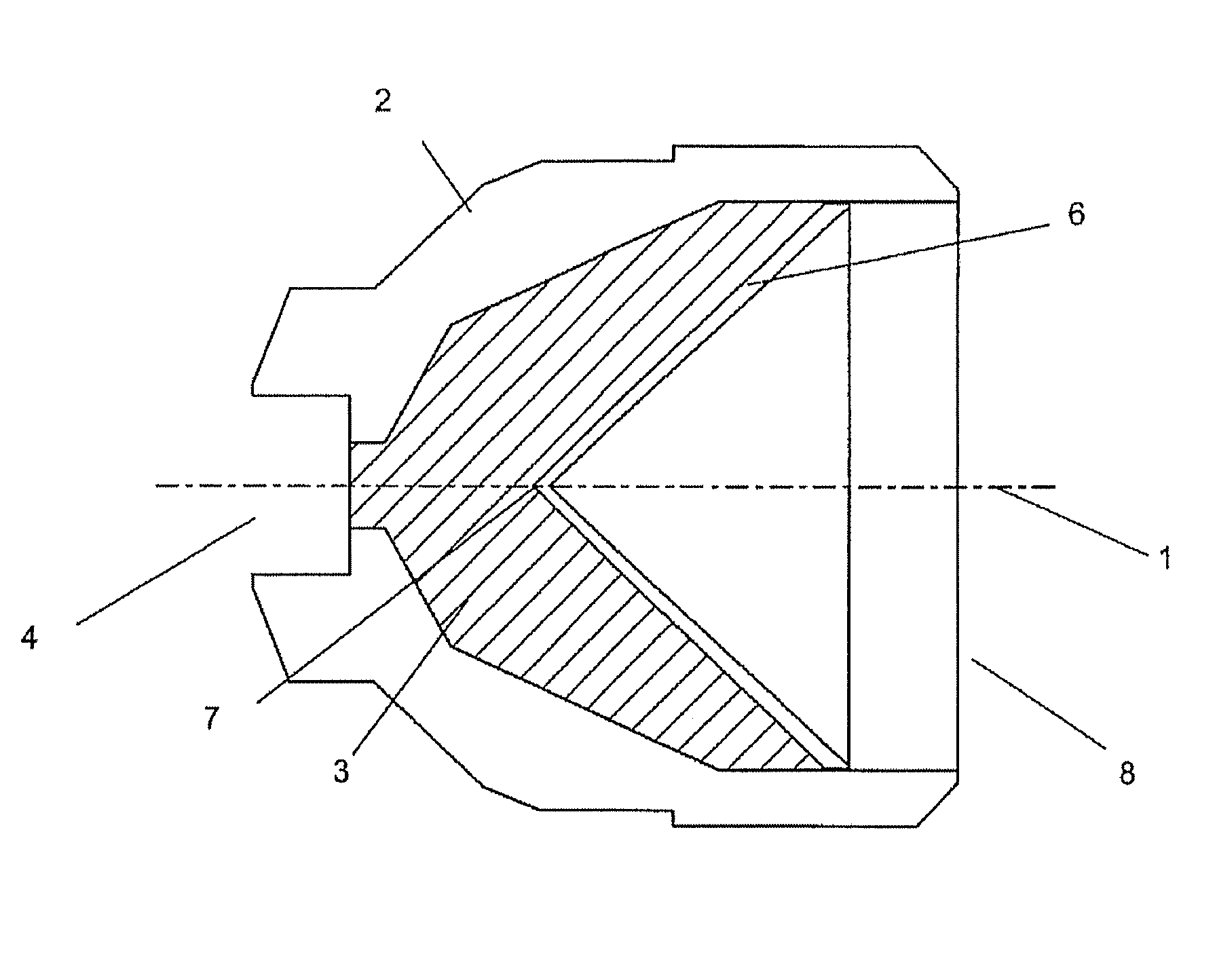Oil well perforators
a perforator and charge liner technology, applied in the direction of explosive charges, wellbore/well accessories, weapons, etc., can solve the problems of not having the density or mechanical strength required, not providing a suitable liner material, etc., and achieve the effect of reducing the likelihood of fragment formation
- Summary
- Abstract
- Description
- Claims
- Application Information
AI Technical Summary
Benefits of technology
Problems solved by technology
Method used
Image
Examples
Embodiment Construction
[0052]As shown in FIG. 1 a cross section view of a shaped charge, typically axi-symmetric about centre line 1, of generally conventional configuration comprises a substantially cylindrical housing 2 produced from a metal, polymeric, GRP or reactive material according to the invention. The liner 6 according to the invention, has a wall thickness of typically say 1 to 5% of the liner diameter but may be as much as 10% in extreme cases. The liner 6 fits closely in the open end 8 of the cylindrical housing 2. High explosive material 3 is located within the volume enclosed between the housing and the liner. The high explosive material 3 is initiated at the closed end of the device, proximate to the apex 7 of the liner, typically by a detonator or detonation transfer cord which is located in recess 4.
[0053]A suitable starting material for the liner comprises a stoichiometric mixture of 1 to 10 micron powdered nickel and aluminium with a 0.75 to 5% by weight of powdered binder material. Th...
PUM
 Login to View More
Login to View More Abstract
Description
Claims
Application Information
 Login to View More
Login to View More - R&D
- Intellectual Property
- Life Sciences
- Materials
- Tech Scout
- Unparalleled Data Quality
- Higher Quality Content
- 60% Fewer Hallucinations
Browse by: Latest US Patents, China's latest patents, Technical Efficacy Thesaurus, Application Domain, Technology Topic, Popular Technical Reports.
© 2025 PatSnap. All rights reserved.Legal|Privacy policy|Modern Slavery Act Transparency Statement|Sitemap|About US| Contact US: help@patsnap.com


